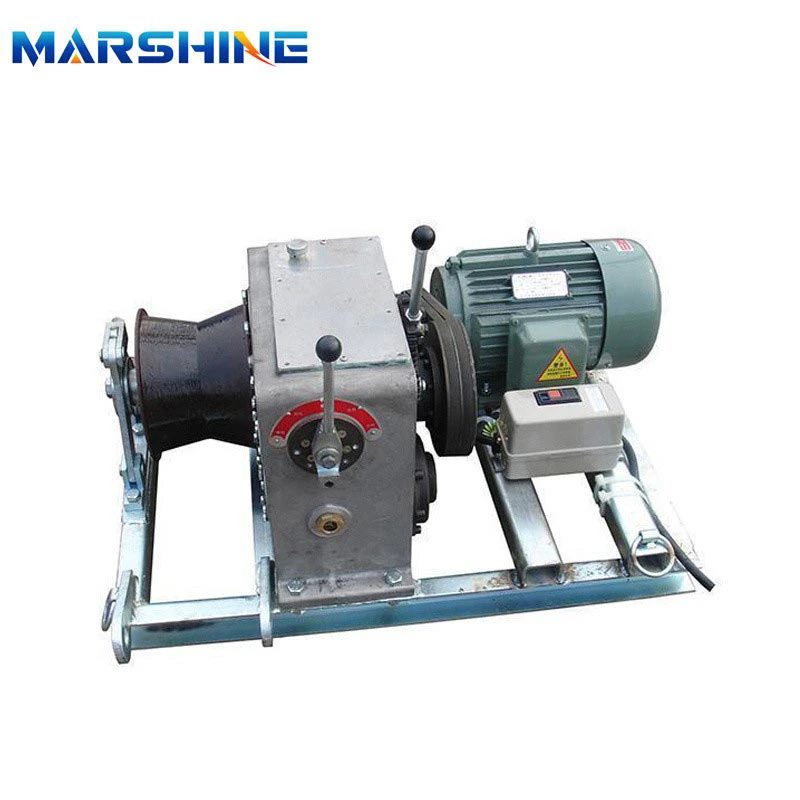Cable Winch: The Ultimate Solution for Lifting and Pulling Applications
2025-03-05
A cable winch is a powerful mechanical device used to pull, lift, or lower heavy loads by winding a cable around a drum. It’s an essential tool across various industries, such as construction, mining, marine, and automotive, due to its versatility and reliability. The cable winch operates by using a motorized system to wind a strong cable, typically made of steel, which then pulls or lifts objects with ease. In this blog, we will explore the functionality, types, applications, and benefits of cable winches, and why they are indispensable in modern-day operations.
What is a Cable Winch?
A cable winch is a device designed to pull, lift, or lower heavy loads with the help of a cable wound around a rotating drum or spool. The drum is usually powered by an electric motor, hydraulic system, or manual force, depending on the application. The cable or rope attached to the winch can be pulled by the winch’s motorized system, allowing operators to move or lift heavy materials or equipment.
Cable winches are commonly used in applications where lifting or pulling is required in a controlled and efficient manner. The winch's design enables it to handle significant loads while maintaining ease of operation. The load can be moved over short or long distances, and winches can be equipped with various features to increase safety, efficiency, and precision.
How Does a Cable Winch Work?
The operation of a cable winch is relatively simple. The winch consists of several key components:
1. Motor
The motor provides the necessary power to rotate the drum. It can be powered by electricity, hydraulic pressure, or even manually, depending on the specific type of winch.
2. Drum or Spool
The drum is the central component of the winch. This is where the cable is wound and unwound as the winch operates. It is designed to hold a substantial amount of cable or rope and rotate in a controlled manner.
3. Cable or Rope
The cable is typically made from high-strength materials such as steel, which allows it to bear significant loads. The cable winds around the drum and is attached to the load that needs to be lifted or pulled.
4. Brake or Clutch System
Most cable winches are equipped with a brake or clutch system that ensures the cable doesn’t unwind or slip accidentally. This safety feature ensures that the winch holds the load securely when it is not in motion.
5. Control Mechanism
The control mechanism allows the operator to control the winch's speed, direction, and load capacity. Depending on the winch type, this could be a manual handle, a switch, or a remote control for more precise operation.
When the motor activates, it rotates the drum in one direction, causing the cable to wind and pull the load. Reversing the rotation of the drum causes the cable to unwind and lower or release the load.
Types of Cable Winches
1. Electric Cable Winches
These winches are powered by an electric motor and are commonly used for lifting or pulling tasks in industries such as construction, automotive, and material handling. Electric cable winches offer efficient operation and are easy to use in areas where electrical power is available.
2. Hydraulic Cable Winches
Hydraulic cable winches are powered by hydraulic systems and are typically used in more heavy-duty applications. The hydraulic mechanism provides greater torque and power, making them ideal for pulling or lifting heavy loads in demanding environments like construction, mining, and offshore industries.
3. Manual Cable Winches
Manual cable winches are operated by hand using a crank or gear system. While they don’t offer the same power as electric or hydraulic winches, manual winches are often used for lighter loads or in situations where electrical or hydraulic power is unavailable. These winches are portable and cost-effective.
4. Pneumatic Cable Winches
Powered by compressed air, pneumatic cable winches are useful in environments where electricity or hydraulics may not be feasible. These winches are typically used in hazardous or explosive environments, where a spark-free operation is critical.
Applications of Cable Winches
Cable winches have a wide range of applications across various industries, and their versatility makes them indispensable tools. Some common applications include:
1. Construction and Heavy Equipment
In the construction industry, cable winches are used to move materials and equipment on job sites. They can lift heavy loads, such as building materials, and even assist in the placement of large construction equipment.
2. Marine and Offshore
In the marine industry, cable winches are used for anchoring ships, retrieving fishing nets, or pulling objects in and out of the water. Offshore oil rigs also use cable winches to lift equipment and personnel safely in harsh marine environments.
3. Mining
Cable winches play a vital role in the mining industry, where they are used to pull mining carts, lift heavy equipment, and help in ventilation systems. The high strength and durability of cable winches make them ideal for use in underground and surface mining applications.
4. Automotive and Towing
Cable winches are widely used in the automotive industry for towing and recovery purposes. They help pull stranded vehicles or equipment from difficult terrains, ensuring safe and efficient vehicle recovery.
5. Entertainment Industry
In the entertainment industry, particularly in theater and film production, cable winches are used for stage rigging. They help move scenery, props, and even performers for dramatic effect.
6. Agriculture
Cable winches are sometimes used in agriculture for pulling heavy equipment or assisting with tasks such as hay baling or lifting large farm machinery.
Benefits of Using a Cable Winch
1. Efficient Lifting and Pulling
Cable winches offer efficient and controlled lifting and pulling of heavy loads. They provide a safer and more manageable way to move large or cumbersome materials.
2. Versatility
Cable winches can be used for a wide range of applications, from light-duty tasks to heavy-duty industrial operations. Their versatility makes them valuable tools across many industries.
3. Space-Saving Design
Many cable winches have compact designs, allowing them to be used in tight spaces or portable applications. This is especially beneficial in industries like construction, where space is often limited.
4. Safety Features
Modern cable winches come equipped with safety features such as automatic brakes, overload protection, and remote control systems to enhance the safety of operators while reducing the risk of accidents.
5. Durability and Reliability
Built to withstand harsh conditions, cable winches are designed to offer high durability and reliability. Whether exposed to extreme weather conditions or heavy-duty operations, these winches are designed to handle challenging environments.
Conclusion
Cable winches are indispensable tools for lifting, pulling, and positioning heavy loads in a variety of industries. From the construction site to the marine environment, their versatility, efficiency, and safety features make them an essential piece of equipment. Whether you're dealing with heavy lifting, towing, or moving materials over long distances, a cable winch provides a reliable solution. With different types available to suit specific applications, it's easy to find the right winch to meet your needs and ensure safe, efficient operation.



